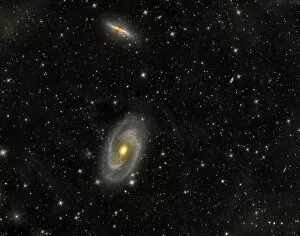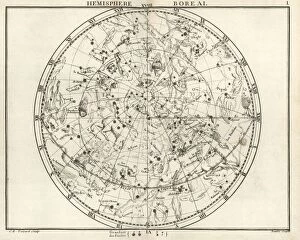Ursa Major Collection (#3)
"Ursa Major: A Celestial Marvel Unveiled" Gaze up at the night sky, and you'll find a celestial wonder known as Ursa Major
All Professionally Made to Order for Quick Shipping
"Ursa Major: A Celestial Marvel Unveiled" Gaze up at the night sky, and you'll find a celestial wonder known as Ursa Major. This constellation holds many captivating secrets, starting with its famous asterism, The Plough. Resembling a giant ladle or plow, it guides stargazers through the vastness of space. Amongst the countless stars within Ursa Major lies Sirius, shining brightly in an optical photo enhanced by a star filter. Its brilliance rivals even that of the spiral galaxy NGC 2841 captured by Hubble Space Telescope's lens - a breathtaking sight that leaves us in awe of our universe's grandeur. Speaking of spirals, M81 stands out with its mesmerizing beauty. Through composite images showcasing its intricate structure, we witness nature's artistry on display. Not far away is another spiral marvel - M82 or Cigar galaxy - whose composite image reveals stunning details hidden within its cosmic smoke. For centuries, astronomers have charted these wonders meticulously. Bode Star Atlas from 1829 immortalizes Ursa Major's splendor while serving as a guide for explorers seeking to understand this enigmatic constellation. But Ursa Major isn't just about distant galaxies; it also dances with earthly phenomena like the Aurora borealis. As these ethereal lights paint the night sky alongside this majestic constellation, they create an enchanting spectacle that captivates all who witness it. Even modern interpretations add new dimensions to Ursa Major's story. In Aquarius' company under today's night sky constellations map lies this timeless gem – reminding us how ancient myths intertwine with scientific discoveries to shape our understanding of the cosmos. As we continue unraveling mysteries beyond our world’s boundaries through telescopes like HST and human curiosity alike, let us never forget to look up and appreciate the wonders bestowed upon us by Ursa Major – forever inspiring us to reach for the stars.































